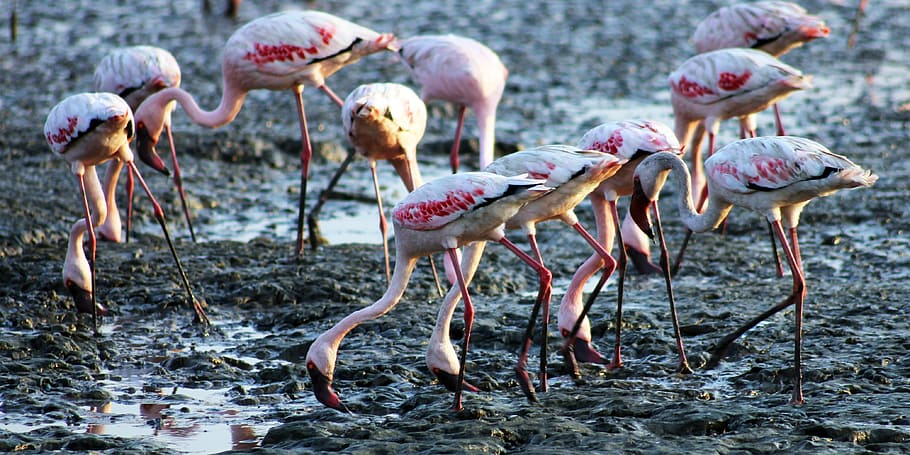
Besides habitat destruction due to urbanisation, declining insect population, and farm chemicals are also impacting birds
LOCKDOWN HAS given a reprieve to nature. Wild animals are visiting our vehicle-free cities, mountains are visible long distance and there are more bird songs audible through the day.
Sadly, this is just for a brief period before we go back into industrial production full throttle. In fact, incidents in not so distant suggest the bird species are having a tough time in India.
In February an image of a rare oriental darter or snakebird went viral online. The bird, classified as ‘near threatened’ by the International Union for Conservation of Nature (IUCN), was struggling to free its beak from a piece of plastic.
The incident was reported from Palwal in Haryana which has lost more than half of its wetlands in 30 years from 1970s to 2000 due to land-use change like agricultural expansion, and the ones that remain turned very dangerous for avian species because of waste dumping in the water bodies.
On November 11, 2019, around 1,500 migratory birds of nearly 15 species were found dead around Sambhar Lake near Jaipur. This was a second instance in a month after 37 demoiselle cranes were found dead earlier in the Jodhpur area of Rajasthan.
The most possible reason for the death of those birds was avian botulism, a neuromuscular illness of waterfowl caused by a bacterial infection.
India’s birds are declining significantly with 52 percent of species showing clear declines over the past decades
Wetlands are one of the safer areas for birds but unplanned development is destroying these water bodies along with other habitats of birds. India’s birds are declining significantly with 52 percent of species showing clear declines over the past decades, said a new report State of India’s birds 2020.
The report analysed 867 bird species from over 10 million observations collected by over 15,500 birdwatchers across the country. It also identified 101 species with high conservation needs.
Of these, forest species have declined the most, followed by grassland/scrubland species, and then wetland species. Besides habitat destruction, decreasing insect populations, pollution and heavy usage of farm chemicals are also impacting the birds.
“The take-home message is that urbanisation is the biggest culprit behind avian decline. Most of our common birds like house sparrows and bulbuls are declining. At the same time, such birds are doing very well in rural and agricultural landscapes.” Rajah Jayapal, senior principal scientist at the Salim Ali Centre for Ornithology, Coimbatore, told Down To Earth.
Urbanisation is the biggest culprit behind avian decline. Common birds like house sparrows and bulbuls are declining but these are doing well in villages
The common-bird sparrow has declined in urban cities, the data of six largest urban cities, Bengaluru, Delhi, Chennai, Hyderabad, Kolkata and Mumbai, reveals a gradual decline of the species in urban cities.
Overall, migratory species (both long-distance and within-subcontinent) show steeper declines than residents, said the report. The number of migratory birds visiting the Delhi sanctuaries and habitat place, from the mid October to March, have declined because of the pollution and urbanisation.

Vultures have also found a special mention in the report. Vultures play a valuable role in the ecosystem as a scavenger. They live off dead bodies, and cattle carcasses and their speedy, efficient disposal of bodies does not allow deadly bacteria to develop and spread. High body temperatures and strong stomach acids allow vultures to ingest carrion infected by bacteria without any ill-effects.
The study underlined the severe decline of vultures for the last 25 years. A survey across 18 protected areas estimated that in 1991-92 there were over 40 million vultures in India but three ‘Gyps’ species of vultures India, the long-billed (Gyps indicus) and the slender-billed (G. tenuirostris) and the rarest being the white-rumped (G. bengalensis), declined by 97-99.9 percent between 1992 and 2007.
“This is the fastest decline of any bird species ever reported anywhere in the world”, Asad Rahmani, former director of the Bombay Natural History Society (BNHS) told Mongabay.
With the near extinction of this efficient scavenger the possibilities of diseases like tuberculosis, anthrax and rabies have increased. It was noted that the number of dogs has increased, an estimated 5.5 million, with the decline in vulture population.
In absence of data on DNA and feather structure only 1 percent of cases in wildlife crime get convicted
Raptors like vultures are sensitive to environmental changes and can decline if their habitat is lost or degraded. Decline of vultures has specifically been attributed to use of veterinary drug Diclofenac. Vultures are highly susceptible to Diclofenac poisoning, and are killed by kidney failure within a short time of feeding on the carcass of an animal treated with the normal veterinary dose of the drug.
In 2006, Ministry of Environment & Forest Government of India came up with an Action Plan for Vulture Conservation in India and banned the use of Diclofenac. Though the decline of Vultures has slowed down but at a very low rate.
The Indian government recently proposed a 10 year conservation plan, for conservation of birds and their habitats in the country The plan has proposed protection of bird habitats from turning into wastelands and conservation of wetlands and coastal areas that are frequented by birds.
The programme also includes mapping of the places or markets, halt on illegal trade of birds as well as generation of database on DNA and feather structure for forensic purposes in tackling wildlife crime. In the absence of data only 1 percent of cases in wildlife crime get convicted. The government also plans to monitor the avian diseases in birds to prevent incidents like mass deaths in Sambhar lake.
Liked this story? GoI Monitor is a non-profit, and we depend on readers like you to Support Our Efforts
